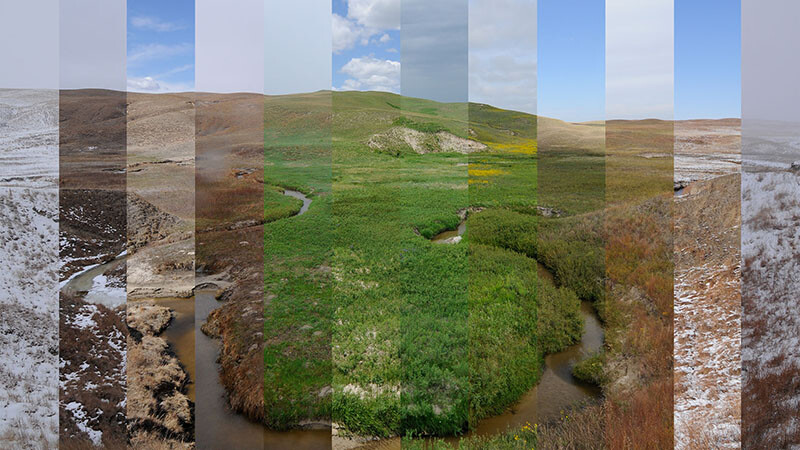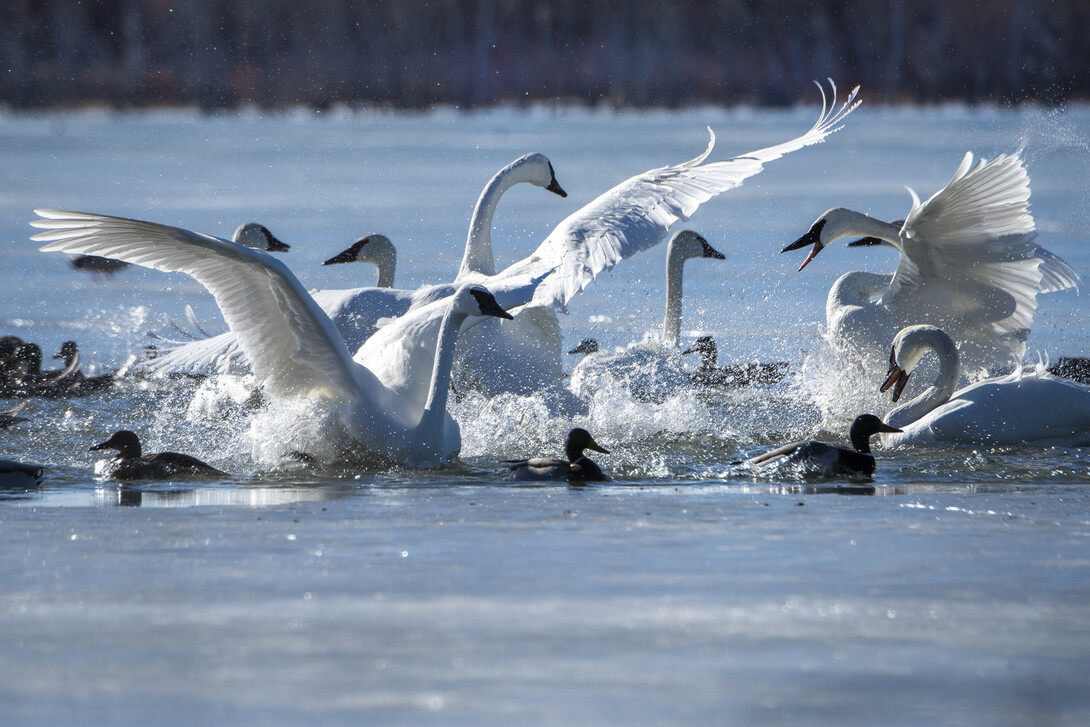
Since its founding in 2011, the Platte Basin Timelapse project team has told the story of the 90,000 square-mile Platte River Basin through photography, videography and writing.
Often in those processes, the Platte Basin Timelapse team turned to faculty from the University of Nebraska–Lincoln School of Natural Resources to provide insight and expertise about elements of the natural world spotlighted in the work.
And the School of Natural Resources’ faculty and staff have sought out Platte Basin Timelapse’s storytellers to help with projects, too. From examining the braided river habitats of terns and plovers to reporting on the return of the trumpeter swan to Nebraska’s Sandhills, Platte Basin Timelapse projects and the School of Natural Resources interests have often overlapped.
It’s fitting, producer and project manager Mariah Lundgren said, that the Platte Basin Timelapse team is now housed at the School of Natural Resources.
“At the core of it, it just makes sense,” Lundgren said. “Our missions are very similar when it all boils down to it. We’re a part of SNR now, but we’ve always felt at home with SNR.”
Since the team moved its headquarters to the second floor of Hardin Hall this summer, the collaborative efforts have increased. For instance, producers Ethan Freese and Grant Reiner recently held a studio photography session with a salamander in herpetologist Dennis Ferrarro’s lab. Through photography, they are documenting the salamander’s evolution from larval stage to full maturity. Images from that effort will be included in K-12 curriculum and the updated Guide to Nebraska Wetlands, which Platte Basin Timelapse is creating in partnership with the Nebraska Cooperative Fish and Wildlife Research Unit during a three-year project funded by the Nebraska Game and Parks Commission and Environmental Protection Agency.
Kevin Pope, director of the Nebraska Cooperative Fish and Wildlife Research Unit, said that, while the cooperative has worked with Platte Basin Timelapse in the past, the move to the School of Natural Resources will strengthen opportunities to collaborate, and lead to engaging products.
“They are great photographers, but they’re really connected to nature and the natural resources they document, and they’re capable of telling a story in a lot of different ways,” Pope said. “This is a dedicated group of folks that are (true) professionals and really enjoy what they’re doing.”
The curriculum and the Guide to Nebraska Wetlands will feature the types of high-caliber multimedia productions the Platte Basin Timelapse team has produced since it was founded in 2011 by Michael Forsberg and Mike Farrell.
Forsberg and Farrell were wrapping up production of the NET Nebraska documentary based on Forsberg’s book, “Great Plains: America’s Lingering Wild,” when they began discussing the early concepts of what would become the Platte Basin Timelapse project. In the documentary, they had utilized time-lapse photography to present transitional elements from one part of the story to the next. As they were driving home from one of their final shoots, Farrell asked Forsberg what he was going to do next.
“I was like, well, maybe sleep for a while?” Forsberg said. “But I told him I’ve been thinking a lot about time. The passage of time and how every place you go as a photographer, at least for me, people say, ‘Hey man, you should have been here yesterday.’ Or ‘I remember the time when the river was this high.’”
For the Great Plains documentary, Forsberg said they used time-lapse cameras to capture seminal, elusive images, like a bobcat prowling into frame. But he wondered what it would look like to place cameras along the path of a watershed, with each camera telling a different part of the story.
“That means looking at the entire system as a living organism and not concentrating on artificial, geopolitical boundaries,” said Farrell, a longtime NET documentary producer. “We want to answer the question, ‘Where does your water come from?’ And to highlight the stories behind those answers.”
Platte Basin Timelapse was founded in partnership with the university and NET Television, and it has partnered with numerous local, state and federal entities and agencies while telling stories of the watershed. The transition to SNR, Forsberg said, brings the staff into closer orbit with scientists who they have worked with for years.
“These are friends and colleagues,” Forsberg said. “If you take water out of the equation from just about any research project you see, there’s not a research project. It’s integral to this place, to this landscape, to this geography where water is at a premium. I also think that it’s something we can all relate to, and we can all have a conversation about.”
Since 2011, the Platte Basin Timelapse team has installed more than 60 time-lapse camera systems throughout the Platte River Basin, providing round-the-clock glimpses into settings stretching from the river’s headwaters in the Colorado Rockies to its confluence with the Missouri River along the eastern border of Nebraska. The story of the water, and the lives it touches, are told along the river’s nearly 900-mile path.

John Carroll, director of the School of Natural Resources, said that Platte Basin Timelapse’s expertise will benefit not only the School of Natural Resources but the Institute of Agriculture and Natural Resources as a whole, aligning with Vice Chancellor Michael Boehm’s vision for integrating storytelling with the science being done on the university’s East Campus.
“Strategically, PBT and SNR can enhance both missions by providing a solid platform for the PBT program to continue their work on the Platte River Basin,” Carroll said. “We’re collaborating on projects that tell the stories of our science in ways that will show people the Nebraska lands, species and issues we care deeply about. The most exciting prospect of the partnership, I believe, is that working with PBT will enhance the quality of the science that we do in Nebraska.”
To see film, photos and stories created by the Platte Basin Timelapse team, visit the Platte basin Timelapse website and Facebook, Instagram and Twitter pages.







